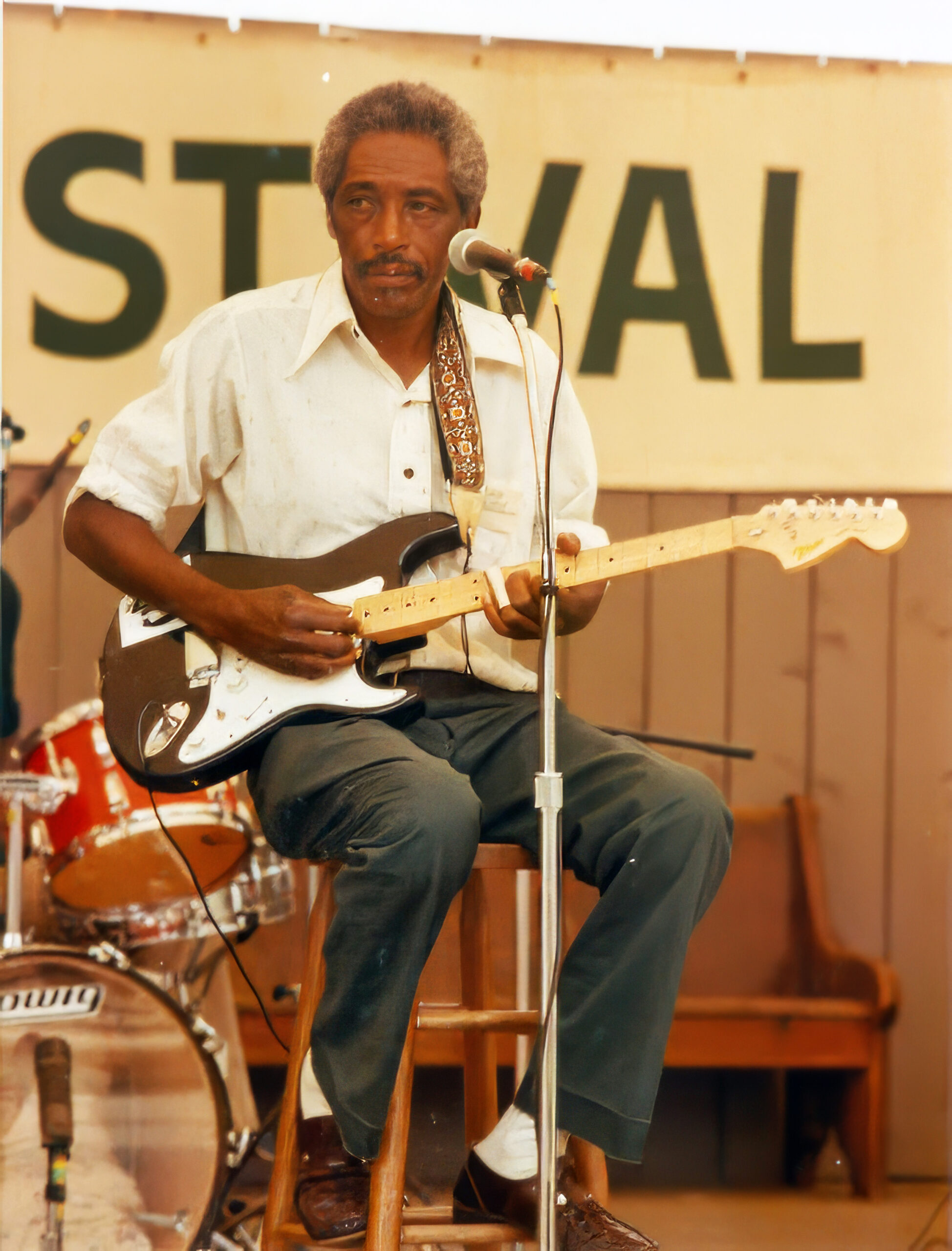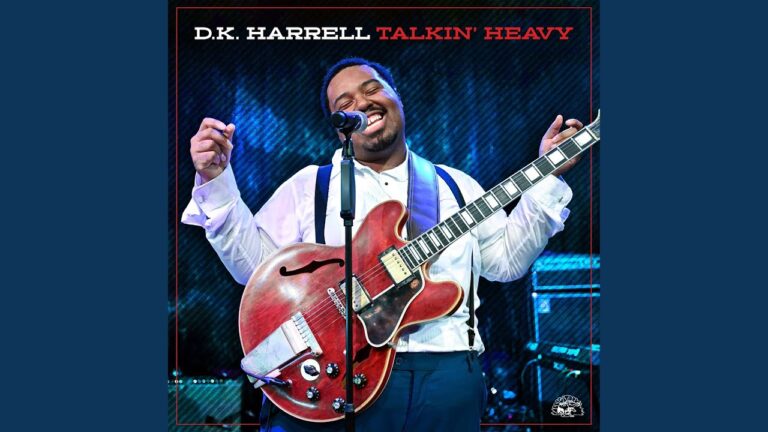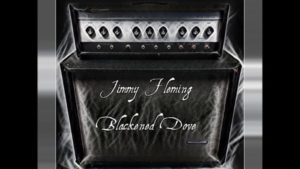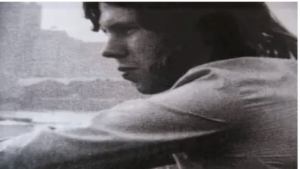Mississippi Hill Country Blues music is a style of blues music that originated in the northern part of Mississippi. It is characterized by its repetitive and hypnotic rhythms, often played on a single chord. The style is heavily influenced by African rhythms and traditions and is known for its raw and gritty sound. Some of the most notable musicians associated with Mississippi Hill Country Blues include R.L. Burnside, Junior Kimbrough, and Fred McDowell. The style continues to influence contemporary blues and rock musicians today.
The Mississippi hill country blues guitar has produced so many greats over the years. Ranging from newer generation hill country blues like Keith Hallett and Garrett Mason, as well as Burnside’s protege Kenny Brown. Other modern acts like The John Spencer Blues Explosion shed light on old-time pioneers of the hill country blues such as RL Burnside. This light of renewal even was the catalyst for R.L. being inducted in 2006 to the Blues Hall of Fame.
Thankfully, the Burnside dynasty of blues continues as Cedric, the grandson of Robert, is also a great blues guitarist. Initially, a drummer, but the guitar called upon him to become the hill country blues guitarist we know today.
Next Generation Hill Country Blues Cedric Burnside – “We Made It” (OFFICIAL VIDEO)
If you have your name and face in a museum you have to be good. The man who said “my name is Robert too” was on the top of lists of the best bluesmen and his soul and personality are ingrained in the albums “Ass Pocket of Whiskey” and “Too Bad Jim” which set the standards for hill country blues for years to come.
Chicago and Texas blues have their own sound which is undeniable. There is a refinement involved which even though the original Delta blues was primal was given a sophistication in the playing of Robert Johnson.
HILL COUNTRY BLUES GUITAR Great RL Burnside November 23, 1926-September 1, 2005
The North Mississippi Hill Country has retained the primal fashion over the decades. It’s all about a groove and in most cases, the songs never changed out of the one-chord basis. The result is a hypnotic style where that groove can make one forget about time.
To some, it sounds simple. I assure you it’s not. As a player myself, I’ve taken on the approach of the songs and it wasn’t quick getting there. There may be a rhythmic twitch or a shift of timing. Like trying to learn the “One” which is the basis of Funk, if you aren’t getting it with authority, you are not getting it.
Having covered many songs by R.L. Burnside in a club gig didn’t happen with ease. In the earlier years of my own music, I caught flack for not changing keys. The point is if you are finding the trance that music inspires and you are in the zone if it ain’t broke don’t fix it. It’s done for a reason.
R.L. Burnside: See My Jumper Hanging On the Line (1978)
John Lee Hooker and Lightnin’ Hopkins were influential as many of these men didn’t pick up the guitar until their later years. As for the rebellion to conformity, they understood their position as original men, individuals who did as they pleased. Lightning Hopkins upon being chastised for unusual timing of chord changes responded simply “Lightnin’ change when Lightnin’ want to change.” You don’t like it? There’s the door… One can see that in the lives of the Hill Country players.
I came to know about the men who were down south from “Fat Possum Records”. They were championing the music on not only R.L. but the likes of T Model Ford, Junior Kimbrough, and Cedell Davis. They also had a hand in new music at the time of an unknown Ohio band called “The Black Keys”.
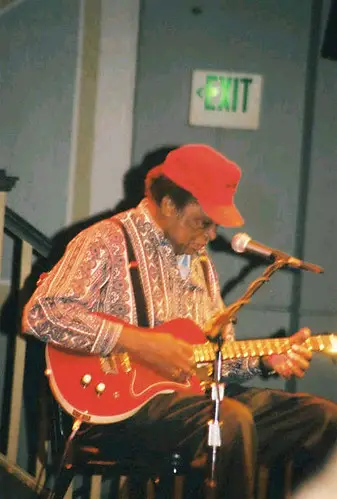
Remembering Junior Kimbrough – I’m Leaving You Baby
The other aspect of this style of music was you may find any combination or configuration. It could be one man alone, it might be a two-man band like The Keys, or two guitarists and a drummer which opened my mind to what would be the foundation later for my work with “Uncle Mont’s Quandry” and Black Cat Mass in its original form. “Anything goes, as long as it’s good ” and how you got there made no difference.
This exposure from “Fat Possum” along with guitarist Luther Dickinson would bring the spirit and even the artists to the public eye and the youth by putting them in fests like “Bonnaroo”.
The subject matter of the songs was also as real as it gets. My favorite quote from anyone ever was when R.L. Burnside was asked to explain him shooting a man. “I didn’t kill him now, I just shot him. I told him it was up to him and the Lord about dying.” He had been gambling, throwing dice, and had won around $400 and the fellow wanted his money back. The dice was not loaded, but the gun was.
R.L. was sentenced to 5 years in prison but was out in 6 months. T Model killed a man in self-defense by stabbing at the age of 18. He spent time regardless on the chain gang for it.These were not the men to mess with. If it is being sung, it’s based on truth and experience.
Cedell Davis, who was stricken with polio and also had the misfortune of being trampled during a juke joint riot, did not let it stop his playing. He could no longer play in a traditional way so he flipped the guitar upside down and used a butter knife as his fingers. Not simply for a slide only but for the replacement of fingers to play the notes as well. That is determination if anyone ever had it.
The gear employed to play the music is also all about necessity and affordability. The guitars were often Japanese Teisco’s, anything you can find in the pawnshop or trade a shotgun for, or in the case of T Model Ford a Peavey guitar and amp together. If you are a guitarist of any length of time you have probably used the Peavey amp at some point, they are reliable, built like a tank, and can last a lifetime. What many don’t know is as odd as many Peavey guitars are to look at, they have the most streamlined necks of any electric guitar. Comfort like an old Cadillac. Sometimes uglier than homemade sin, but great guitars nonetheless.
Junior Kimbrough’s first release “All Night Long” is a study in the Hill Country Blues. It got his name in Rolling Stone Magazine and other guitar magazines, yet it’s been debated if he had ever left Mississippi before he found himself playing in Europe. At one point Junior was called to tour with Iggy Pop, the request was made by Iggy himself. Junior called him Lollipop and they had a fun and successful time together.
These men played music for the love of it and had no aspirations beyond survival income. There has always been a delicate balance of financial trust and distrust in the recording industry but from all accounts, Fat Possum Records not only captured many of the blues men at their best on record but financially they were as T Model said “white angels”.
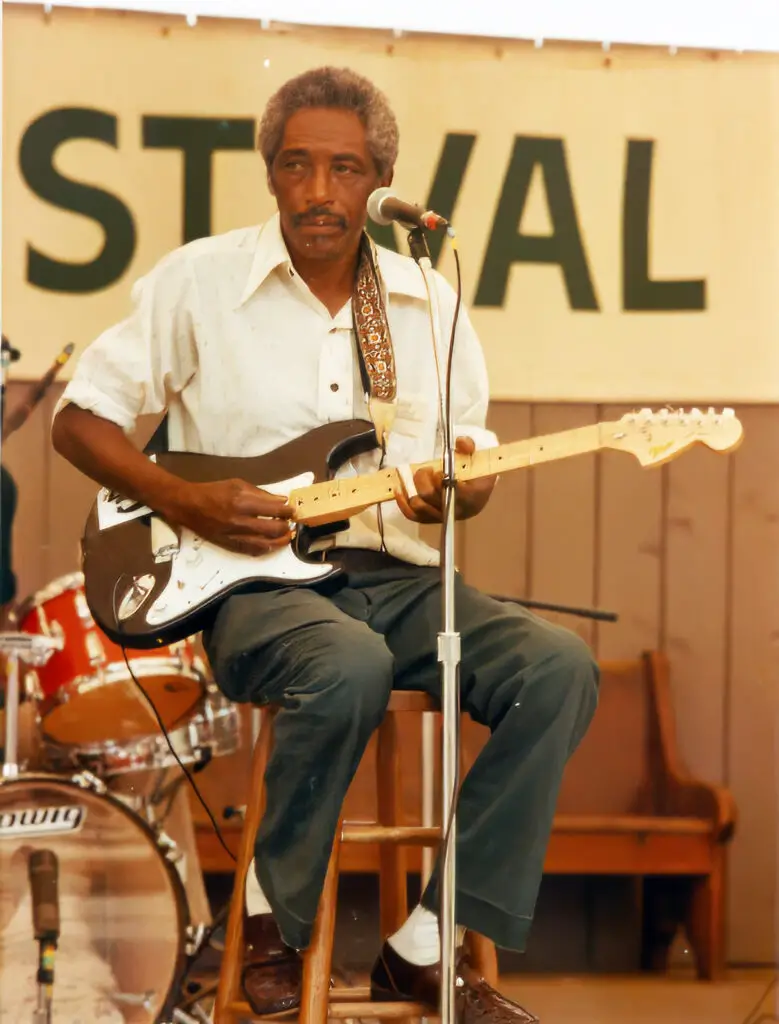
Fat Possum has moved along and now has a roster of young blood, some influenced by the records of the old masters and some outside the tradition doing their own thing. I encourage anyone to seek out the Fat Possum documentary “You See Me Laughin'”, it is a highly worthy watch. It will make you smile, think, and like old R.L. say “Well Well Well!”
R.L. Burnside – Too Bad Jim 94 Album
R.L. Burnside’s album “Too Bad Jim” was released in 1994. It was produced by Tom Rothrock and Rob Schnapf. The album features Burnside’s signature Mississippi Hill Country Blues sound, with gritty guitar riffs and raw vocals. The title track, “Too Bad Jim,” is a standout with its driving beat and catchy chorus. The album also includes covers of blues classics like “Rollin’ and Tumblin'” and “Jumper on the Line.” Overall, “Too Bad Jim” is a must-listen for fans of blues and rock music alike. While you are here why not check out more great guitarist including John Campbell steel guitar master and many more guitar greats.

